
Inherited folklore is alive and well in Scotland. Fed by the glorious splendor of its jagged slopes and misty hillsides, many have heard the tales of roving clans out to even the score of ancient feuds and regain their honor in any way necessary. In fact, during the 17th and 18th centuries, Scotland never seemed to put its longsword down for long. Its history is rife with stories of murder and unrest, depicting some shockingly personal atrocities against neighbors and giving new definition to the term “clan.” Although those times were volatile, characterized by continuous acts of callous violence, what’s not as well-known is that one of Scotland’s oldest families, the Lamonts, would lose several branches of their ancient family tree in just one night—a terrifying event now known as the Dunoon Massacre.
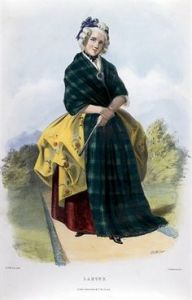
Clan Lamont was said to have descended from Irish monarchy, and as a result of this lineage, they were one of the oldest and most powerful families in Scotland. Through the 11th century, the Lamont chief sat in a town called Dunoon, until 1371 when Robert II of Scotland, upon his ascension to the throne, appointed Sir Colin Campbell the Hereditary Keeper of Dunoon Castle instead. This marked the beginning of an increasingly bitter feud between the two clans, as the Lamonts tried to resist the Campbells’ growing influence.
What resulted from this bad blood was not just a few well-placed words or even a handful of injurious confrontations, but instead the brutal massacre of the Lamont clan, an event that would deal a crushing blow to one of Scotland’s proudest families.
Not only would the Campbells break an age-old code of honor between chiefs, but they would slaughter over 200 Lamont men, women, and children, hanging them from trees and even burying them alive.

The historical Lamont castles would be decimated and Sir James Lamont, the chief at the time, would be thrown into a dungeon for five years. Many say there’s nothing like Highland revenge, but this was excessive, even for the Scots. And that fateful day in 1646 would forever be known as the Dunoon Massacre.

To really understand the tension, rage, and need for vicious revenge that led up to the Massacre, it’s important to see how the Campbells and the Lamonts were pitted against each other from the start, leading to centuries of tit for tat and endless years of targeted violence.

Sir James Lamont who had been knighted by King Charles was given his land around the Cowal Peninsula in Western Scotland in 1472, and there his clan erected a homestead known as Toward Castle. He purchased further lands in 1535 from James V and made significant improvements to the keep when Mary, Queen of Scots visited in 1563. The castle was rumored to be grand and well-appointed; however, no one really knows what it looked like. It only existed for 200 years before being destroyed by the Campbells, and its image was never captured during that time.

Although the Lamonts and Campbells shared a relationship as tense neighbors for centuries, it was around 1400 when things really began to heat up. While the king was staying at nearby Rothesay Castle, a few of his courtiers crossed into Lamont territory on a hunting trip one spring afternoon where they encountered three damsels in the countryside. The Lamont women, alone and unprotected, were attacked and ravished by the king’s men and sent running home to report the appalling incident.
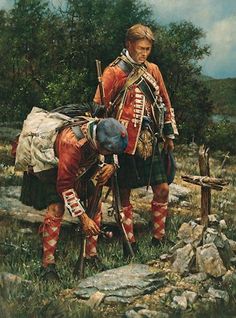
Furious at the news, the Lamonts caught up with the king’s men and killed them before they reached the castle. But once the king caught wind of what happened, he was furious with the Lamonts for daring to touch his courtiers and passed some eight square miles of Lamont territory over to their enemy, the Campbells, as punishment. This decision threw considerably more fuel on the smoldering feud between the two clans until they were eventually forced to join forces in 1544 to defend Dunoon and its castle against the invading English. They lost the battle and parted ways with increased anger and frustration.
Around the year 1639, seven years before the Massacre, the Wars of the Three Kingdoms broke out and exacerbated a series of conflicts between England, Ireland, and Scotland. English rule was invading the independence of the highlanders, beginning a larger conflict that would eventually end their autonomy for good. Scotland and Ireland were tired of England telling them how to pray and where to pay, and so it seemed the Lamonts would be forced to fight alongside their bitter enemies, the Campbells.

Chief Lamont may have fought with the Campbells against England, but that did not mean all was forgotten. The hatred was still running hot in his veins, and so when the war ended, Sir Lamont quickly seized the opportunity to make trouble for the Campbell clan by siding with their bitter enemies, the MacDonalds, and some Irish mercenaries who were up for anything, just as long as it involved fighting.

The Lamont group mustered their strength at Toward Castle and then descended on the Campbell lands, laying waste to the territory, in particular, a town called Dunoon, and taking prisoners from the Tower of Kilmun who begged for their lives. Instead of receiving mercy, however, the prisoners were taken three miles from the tower where they were cruelly put to death. Sir Lamont went on to destroy the grain house; drive off 340 cattle and horses; and kill 33 men, women, and children of the Campbell clan.
The Campbell clan took a few months to recover themselves from this tragedy, although it’s safe to say they were also methodically plotting their own version of holy terror to rain down on the heads of their Lamont enemies. In May of 1646, while the Lamonts were at home in their castles Toward and Ascog, they were besieged by Campbell forces. Given the sheer size of the territory, this did not happen quickly, and it was June when the Campbells began to shell the Lamont strongholds with cannon fire. Realizing they had no recourse from the invasion, Sir Lamont negotiated the terms of surrender for his clan and gave up his beloved castles.
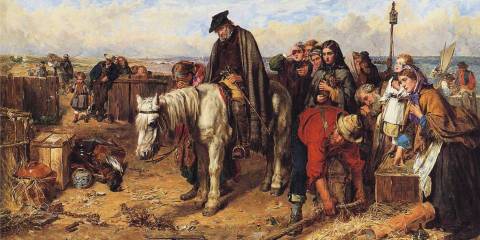
Even though the two chiefs had agreed to a peaceful surrender, the bloodlust was too great for the Campbells who immediately relinquished on the pact. The now submissive Lamonts were put on boats and taken to Dunoon where the symbolic start of their age-old feud would serve as the backdrop for their destruction. Once in the churchyard at Dunoon, the remaining 100 members of the Lamont family were brutally executed. The Lamont strongholds were then looted and burned to the ground while Sir Lamont himself was thrown in a dungeon where he was forced to sign away his lands to the Campbells and mourn for his family in misery.
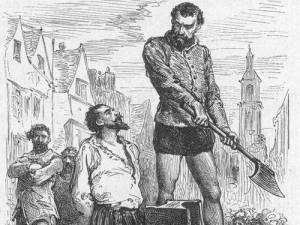
In 1661, the ringleader of the Campbell clan, the Earl of Argyll, was eventually held accountable for his treasonous behavior against the king and heinous massacre of the Lamont clan. He was beheaded soon thereafter, and his head was placed on a spike for all to see until it was buried with his body in the Cowal Peninsula, Scotland.
In classic Medieval form, what resulted from all this pointless bloodshed was one exceptionally haunted castle. By the end of the Dunoon Massacre, the Lamont’s ancestral home, Toward Castle, was left in ashes on its site near the Cowal peninsula of Argyll. There has since been a great house erected on the grounds; however, the ruins of Toward remain mostly unchanged, marking a time of prosperity long past and a bright future dashed upon the craggy Scottish landscape.
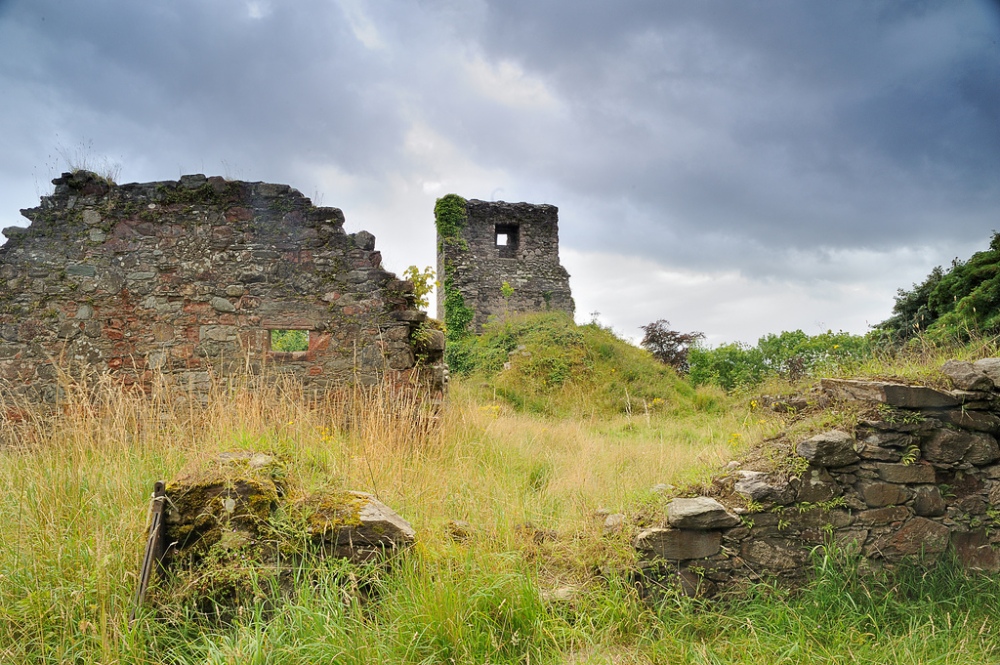
To this day, the remains of Toward sit in the shadow of the 19th century Lamont home, hidden away in a small forest just a few miles from Dunoon. Most visitors report the grounds do, in fact, have an eerie feeling about them, echoing the brutal deaths of so many, and the family has since put up a memorial marking the spot where the massacre took place. It is a site steeped in dark Gaelic history, the very soil stained by the blood of the worst family feud in Scotland.
And the rest is history.

This story was amazing. I have traveled to Scotland and this story brought back memories
I would like to also remark about the fabulous Art work about the characters and the over visual of those times. Thanks for that. Fabulous!!!
LikeLike
Sadly this story is full of factual errors.
LikeLike
Thanks for this. However, it leaves out the heroism of Lady Mary Young Lamont, widow of one of the slain men. She is a great grandmother of mine (many times removed) and also a great grandmother of Sen. John McCain.
LikeLiked by 1 person
Hi Cousin! I would enjoy hearing about Lady Mary’s heroism. Lady Mary is my 11th great grandmother.
LikeLike
I have ancestral ties to the Clan Lamont. Our family lived near Dunoon 1966-1969. While there wre traveled about looking for links to our past. Did not learn of this history until the early 2000s. Missed opportunity to sit with our family.
LikeLike
Lots of errors in time lines, sequence of events and historical plot holes in this story. The clans were friendly and connected by marriage at one time, which is a story in its self, a tale of loyalty to clan, clan law, redemption and tragedy of circumstance.
LikeLike
Lots of errors, sequence of events and historical holes in plot line of story. The clans were friendly and connected by marriage at one time, which is a story in its self. A story of murder, love, clan law, clan revenge, redemption and tragic circumstances.
LikeLike
Very interesting, where can I find more facts on this intriguing story of the Lamont family. Helen Farrell
LikeLike
Helen, the only comprehensive published account of the Lamonts is Hector McKechnie’s book published 1938. It contains factual errors, omissions and questionable use of “tradition”. Having researched the Lamonts for 3 years (an ongoing project) there is no evidence of a “three hundred year feud”. The earlest suggestion was by George Eyre-Todd in 1924. McKechnie offered a different version in 1938. Neither supported by contemporary documented evidence.
The Lamont “story” as presented on the internet is nothing more than myth, legend and fabrication.
LikeLike
Oops double post please remove
LikeLike
Roderick MacPherson – I am intrigued as to what you know about the Lamonts. My Grandfather is a Brown which is a Sept of the Clan. I would be most interested to read your work. Is it available online?
LikeLike
A tragic story..I have visited Dunoon bu5 sadly not much left there…how3ver the Winnipeg Lamont’s continue to flourish!
LikeLike
Have just discovered I am a Lamont clan member as well through my mother’s father, someone I didn’t even know or until now. He’s a Patrick and also came from that area. I’d love to get my hands on that book. Hello cousins.
LikeLike
very clear and consice thankyou
LikeLike
Sir John McGorrie Lamont, Baron of Knockdow was my 10th Great-Grandfather who was one of the men along with his brother Duncan was one of the 36 hung in the tree in the churchyard. His wife Mary Young Lamont and her four sons were able to escape the massacre. The youngest son andrew took his mother’s maiden name Young fearing the Campbells would search them down. The commander of the attacking force, incidentally Campbell of Ardlinglas, was also the brother of Lady Lamont. I have at least 4 different lines of Campbells in my family tree. This seems to be my typical family history. You seem to share the same outlook on history as I do. I never put to much thought into it, until I began researching my geneology. Only by the knowledge of our antecedents can we learn what qualities we have inherited that should be assiduously cultivated or ruthlesslt weeded out. Saint Olga of Kiev was probably my most surprising ancestor. A Saint that was a vengeful mass murder, but that’s Russia where mercy is for the weak.
LikeLike
It’s really a nice and helpful piece of information. I’m glad that you shared this useful info with us. Please keep us informed like this. Thanks for sharing.
LikeLike
Thank you for any other wonderful article. The place else could anybody get that kind of info in such an ideal manner of writing? I’ve a presentation subsequent week, and I am at the search for such info.
LikeLike
You actually make it seem so easy with your presentation but I find this matter to be really something that I think I would never understand. It seems too complex and extremely broad for me. I am looking forward for your next post, I’ll try to get the hang of it!
LikeLike
Hey, you used to write magnificent, but the last several posts have been kinda boring… I miss your great writings. Past several posts are just a little bit out of track! come on!
LikeLike
Heya i am for the primary time here. I came across this board and I to find It truly helpful & it helped me out much. I am hoping to provide something again and aid others like you helped me.
LikeLike
Excellent read, I just passed this onto a colleague who was doing some research on that. And he actually bought me lunch as I found it for him smile So let me rephrase that: Thanks for lunch!
LikeLike